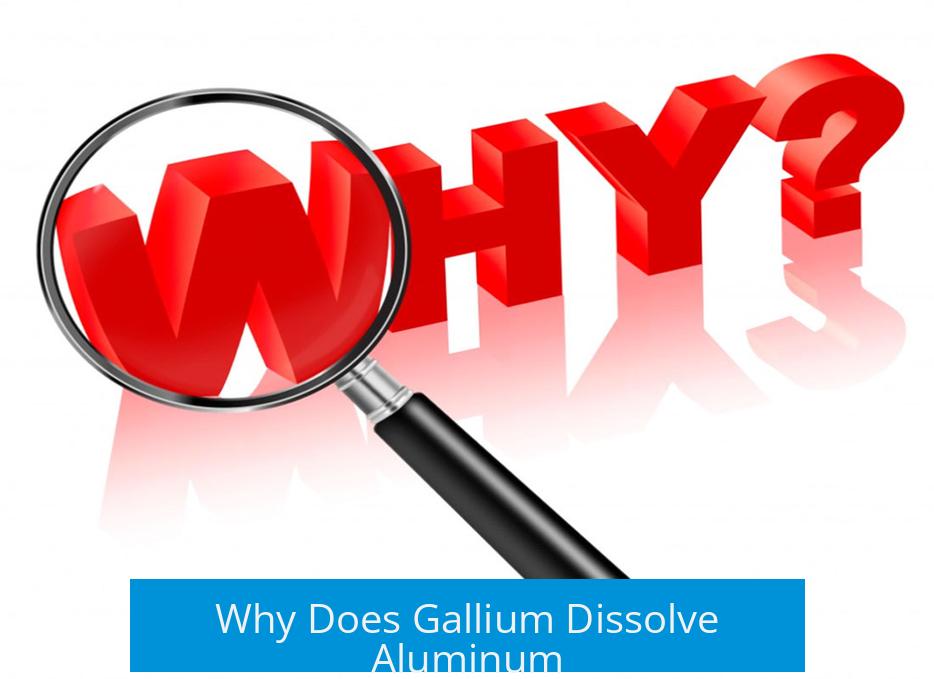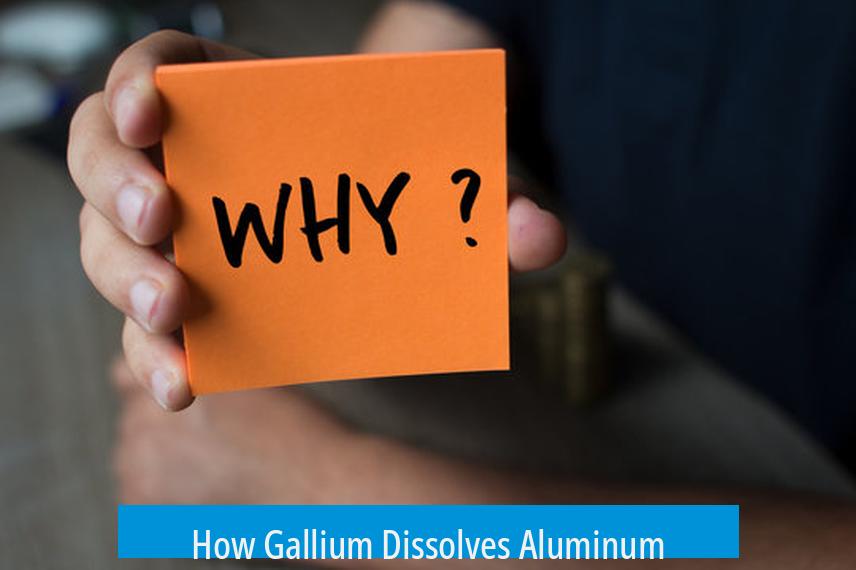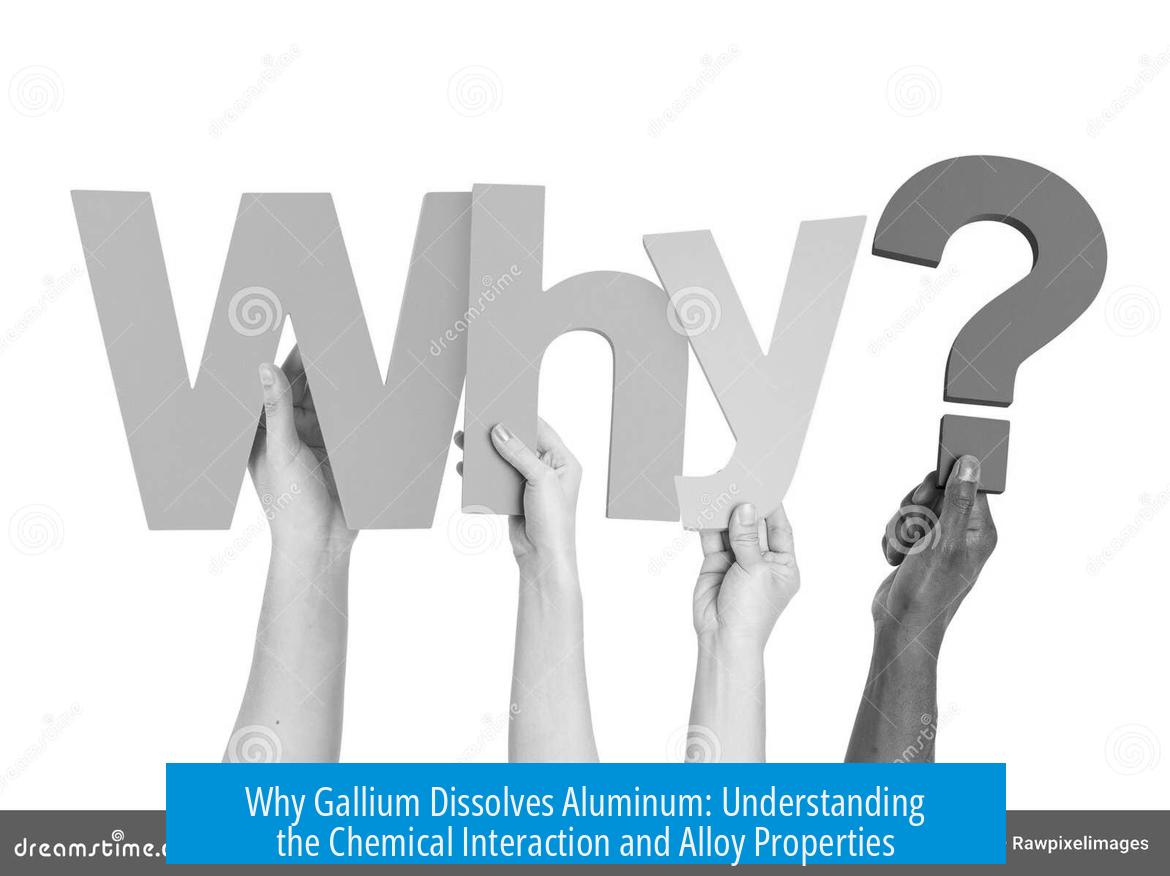Why Does Gallium Dissolve Aluminum?

Gallium dissolves aluminum because it forms a low-melting alloy with aluminum by penetrating its protective oxide layer and mixing at the atomic level.
Aluminum’s Protective Oxide Layer
Aluminum quickly forms a thin oxide layer when exposed to air. This “passive” oxide is impermeable and shields the metal from further oxidation. It acts as a stable barrier, preventing reactions with many substances.
Properties of Gallium
Gallium is unique because it becomes liquid just above room temperature (about 30°C). Being liquid, gallium atoms move freely. This fluidity allows gallium to interact directly with solid aluminum beneath its oxide layer.
How Gallium Dissolves Aluminum

- Gallium disrupts the oxide layer on aluminum, exposing bare aluminum metal.
- Liquid gallium atoms penetrate the aluminum lattice and dissolve aluminum atoms at the atomic level.
- This atomic mixing forms a gallium-aluminum alloy with a very low melting point near 26°C.
The process is similar to sugar dissolving in water, where the solid breaks down into the liquid. Here, aluminum dissolves into molten gallium forming a new liquid metal alloy.
Gallium-Aluminum Alloys and Their Properties
These alloys maintain a low melting point and retain fluidity near room temperature. The exact melting point depends on the gallium-to-aluminum ratio, temperature, and pressure. This explains why the alloy remains liquid under typical lab conditions.
Comparison with Other Metals
Other liquid metals can dissolve aluminum if the resulting alloy is also liquid at the experimental temperature. If not, partial dissolution or a solid interface layer may form, limiting interaction.
Summary of Key Points
- Aluminum’s oxide layer normally protects it from reaction.
- Gallium is liquid near room temperature, enabling free atomic motion.
- Gallium disrupts aluminum’s oxide layer and dissolves aluminum atoms.
- They form a low-melting gallium-aluminum alloy, effectively dissolving aluminum.
- Similar behavior depends on alloy melting points with other metals.
Why does gallium dissolve aluminum despite aluminum’s oxide layer?
Gallium penetrates the passive oxide layer on aluminum. Once it reaches the metal underneath, it forms an alloy. This process breaks the protective oxide layer, allowing further mixing at the atomic level.
How does gallium’s temperature state affect aluminum dissolution?
Gallium is liquid near room temperature. Being liquid allows its atoms to move freely and dissolve aluminum atoms from the solid metal lattice. This is key to gallium’s ability to dissolve aluminum.
What kind of alloy forms when gallium interacts with aluminum?
A gallium-aluminum alloy forms with a low melting point around 26°C. This alloy is liquid close to room temperature, which helps the ongoing dissolution process.
Can other metals dissolve aluminum like gallium does?
Only metals that form a liquid alloy with aluminum at the experiment temperature can dissolve aluminum similarly. If the alloy is solid, dissolution is limited or stops.
Why does gallium dissolve aluminum but not other metals?
Gallium’s unique low melting point and ability to form a liquid alloy with aluminum at room temperature enable it to dissolve aluminum. Other metals lack this combination, so they do not dissolve aluminum as effectively.





Leave a Comment